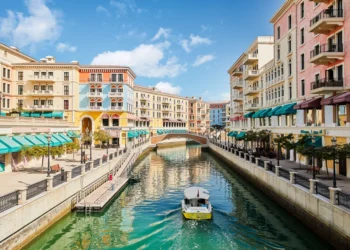Located at the renowned Cascade Complex, a towering multi-level structure adorned with fountains, sculptures, and stunning panoramic views of the city, The Cafesjian Center for the Arts offers visitors a journey through art, architecture, and nature. The Cascade, originally conceived during the Soviet era but only completed with Cafesjian’s help, is a central feature of the center. This limestone staircase-like structure, with its intricate carvings and waterworks, symbolizes Armenia’s history and resilience, while its contemporary art installations represent the country’s forward-looking spirit.
The Cafesjian Center’s primary mission is to provide Armenians and visitors alike with a meaningful encounter with contemporary art. It houses a permanent collection of more than 5,000 pieces, including works by some of the world’s most notable modern artists, such as Fernando Botero, Dale Chihuly, and Lynn Chadwick. Cafesjian’s passion for glass art is evident throughout the exhibits, particularly in the numerous installations by Chihuly, whose bold and intricate glass sculptures bring vibrant color and texture to the space. The center’s collection also includes paintings, graphic works, and decorative arts, all carefully selected to inspire reflection and engagement with modern artistic trends.
The center’s galleries span multiple floors of the Cascade and are organized thematically, allowing visitors to explore a wide range of artistic expressions. The journey begins at the ground floor, where introductory exhibitions provide context on the center’s history and mission. As visitors ascend through the levels, they encounter diverse collections and temporary exhibitions that focus on different aspects of modern art, from abstraction and surrealism to avant-garde and conceptual pieces. This layout encourages an immersive experience, with each level offering a fresh perspective on art’s capacity to challenge, delight, and provoke.
In addition to the galleries, The Cafesjian Center for the Arts is renowned for its Sculpture Garden, an outdoor gallery featuring works by Armenian and international artists. Open year-round and free to the public, the garden offers a peaceful escape in the middle of Yerevan, inviting visitors to wander through art installations that blend seamlessly with the surrounding landscape. Notable pieces include Botero’s iconic “Cat” sculpture and various works by Chadwick, whose abstract forms contrast with the traditional stone carvings of the Cascade.
Beyond its impressive collections, the Cafesjian Center plays an essential role in Armenia’s cultural community through its educational programs and workshops. It offers art appreciation courses, hands-on workshops, and artist talks, making contemporary art accessible to people of all ages. These programs are part of Cafesjian’s vision to nurture a vibrant art culture in Armenia and to foster creativity and critical thinking among the younger generation. Through partnerships with local schools, universities, and art institutions, the center also promotes Armenia’s artistic talent, providing a platform for emerging artists to showcase their work and connect with a broader audience.
The Cafesjian Center for the Arts stands as a remarkable institution, offering a unique blend of art, architecture, and cultural heritage. Through its extensive collection, educational programs, and commitment to artistic excellence, it continues to inspire and enrich the lives of those who visit, making it an essential part of Armenia’s cultural landscape.




























































